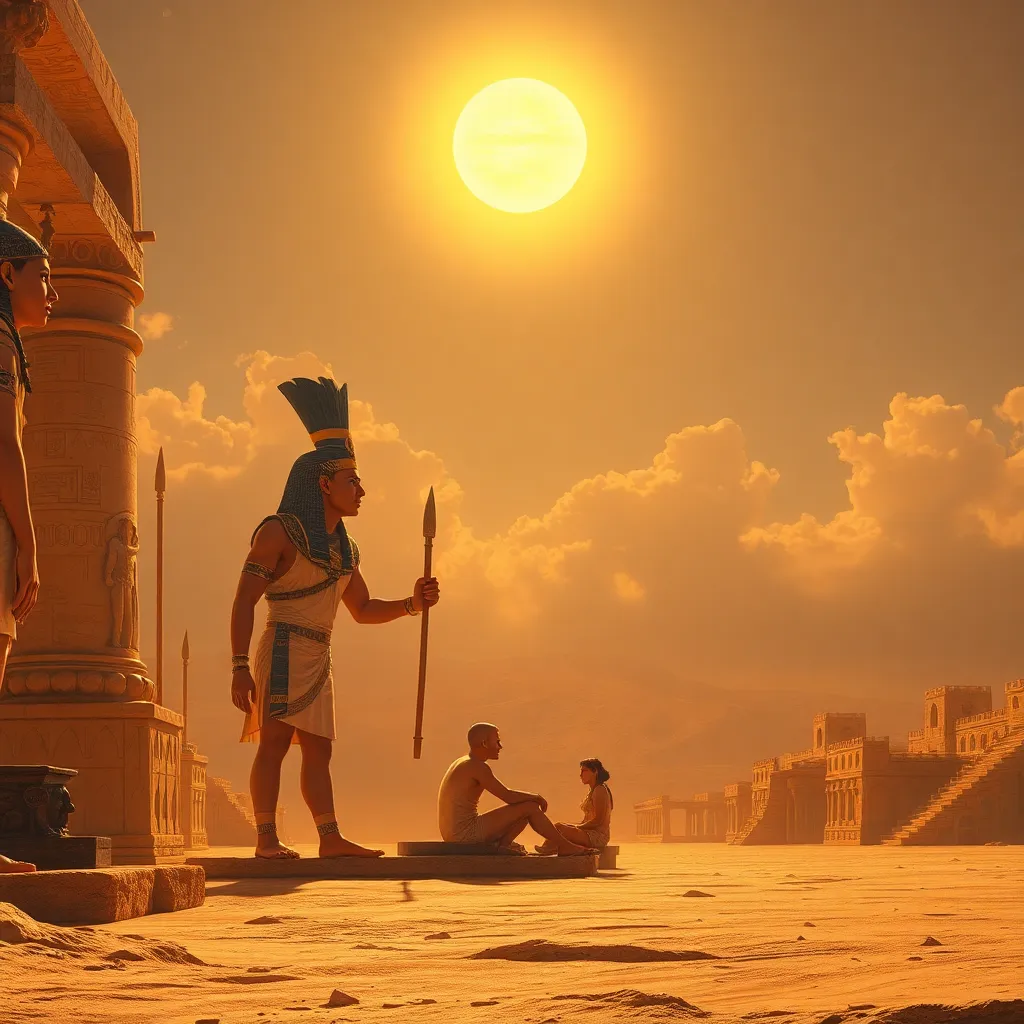The Role of Music in Aten Worship: Sounds of the Sun
I. Introduction
Aten worship in ancient Egypt represents a significant shift in the religious landscape of the time, characterized by the veneration of the sun disk, Aten. This form of worship emerged prominently during the reign of Pharaoh Akhenaten, who pioneered this monotheistic approach. Music played a crucial role in the religious practices associated with Aten, serving both as a medium for communication with the divine and as a means to elevate the spiritual experience of worshippers. This article aims to explore the multifaceted role of music in Aten worship, detailing its historical context, musical elements, and lasting legacy.
II. Historical Context of Aten Worship
The rise of Aten worship can be traced back to the reign of Akhenaten (circa 1353–1336 BCE), who sought to transform the polytheistic religious practices of ancient Egypt into a singular devotion to Aten. This significant shift not only altered the religious practices but also had profound cultural implications for Egyptian society.
- Transition from Traditional Polytheism: Akhenaten’s reforms represented a radical departure from the worship of a pantheon of gods, focusing on the worship of a single deity.
- Cultural Implications: The worship of Aten influenced art, architecture, and societal structures, fostering a new cultural identity centered around this singular divine entity.
III. The Significance of Music in Ancient Egyptian Religion
In ancient Egypt, music was an integral aspect of cultural life and religious observance. Its significance can be understood through several key points:
- General Role in Culture: Music was present in all facets of daily life, from work and celebrations to funerals and religious ceremonies.
- Communication with the Divine: Music was believed to facilitate a connection with the gods, serving as a form of prayer and praise.
- Instruments and Techniques: A variety of instruments and vocal techniques were employed in religious ceremonies, enriching the worship experience.
IV. Musical Elements in Aten Worship
Specific musical elements were essential in the rituals dedicated to Aten. These included:
A. Specific Instruments Associated with Aten Worship
- Harps, Lyres, and Flutes: These string and wind instruments were common in ceremonies, producing melodies that honored the sun god.
- Percussion Instruments: Instruments like drums and sistrums were used to keep rhythm and invoke a spiritual atmosphere.
B. Types of Music Performed During Rituals
- Hymns and Chants: Devotional songs were sung to praise Aten, often composed with poetic lyrics that conveyed reverence.
- Processional Music: Music accompanied processions, elevating the solemnity and communal participation of the worshippers.
V. The Symbolism of Sound and Light in Aten Worship
In Aten worship, music and light share a profound symbolism:
- Connection Between Music and the Sun’s Rays: Just as the rays of Aten provided life, music was seen as a divine force that connected worshippers to the god’s essence.
- Sacred Atmosphere: The sounds produced during rituals created an environment that was conducive to spiritual experiences and divine presence.
- Invoking the Presence of Aten: The rhythms and melodies were believed to invoke Aten’s presence, allowing the worshippers to feel closer to the divine.
VI. Ritual Practices Incorporating Music
Music was central to various key ceremonies in Aten worship:
- Key Ceremonies: Major festivals and daily rituals often featured music, enhancing the solemnity and joy of the occasion.
- Role of Musicians and Priests: Musicians, often trained from a young age, worked alongside priests to ensure the proper execution of rituals.
- Audience Participation: Music invited communal engagement, with worshippers joining in songs and clapping, creating a unified spiritual experience.
VII. The Legacy of Music in Aten Worship
The impact of music in Aten worship extended beyond its time:
- Influence on Subsequent Practices: Elements of Aten worship and its music can be seen in later religious practices in ancient Egypt.
- Preservation of Musical Traditions: Artistic depictions and written records have helped preserve the musical traditions associated with Aten worship.
- Modern Interpretations: Contemporary musicians and scholars are exploring and reviving the sounds and rituals of Aten worship, connecting the past with the present.
VIII. Conclusion
In summary, music played an indispensable role in Aten worship, enriching the spiritual landscape of ancient Egypt. Through its unique instruments, melodic hymns, and the profound symbolism of sound and light, music helped forge a deep connection between worshippers and the divine. The enduring impact of these practices continues to resonate, inviting further exploration and understanding of ancient Egyptian music and its role in religion.
For those interested in delving deeper into ancient Egyptian music, many resources and archaeological findings offer insights into the rich musical heritage that shaped the spiritual practices of this fascinating civilization.




